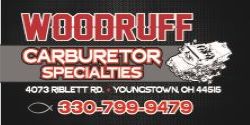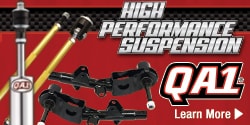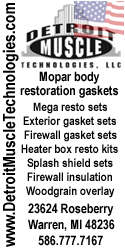The old towing criteria used to be to use a rear axle gear ratio that would put the engines rated torque peak at the legal speed you'd be towing at. Might be better to go ahead and put a ~600cfm 4bbl on it, a lower gear in the back, and enjoy the towing experience.
You CAN still keep things stock looking. Hide the elec choke wire in the existing wires along the front of the cowl, then the harness that runs down the rh valve cover going to the distributor. Buy a '68 Road Runner air cleaner, to get the needed air cleaner base plate to use with the existing air cleaner atop. Paint the intake manifold engine color. Unless somebody looks closely, it'll look "all stock".
With, say, a 625cfm AVS2, you'll have the smaller diameter primary side (as the existing 2bbl), but also have enough additional airflow for those 2nd gear pulls up hills, too.
Nothing against "big 2bbls", but for your purposes, a 4bbl setup might be the best alternative.
Enjoy!
CBODY67

















